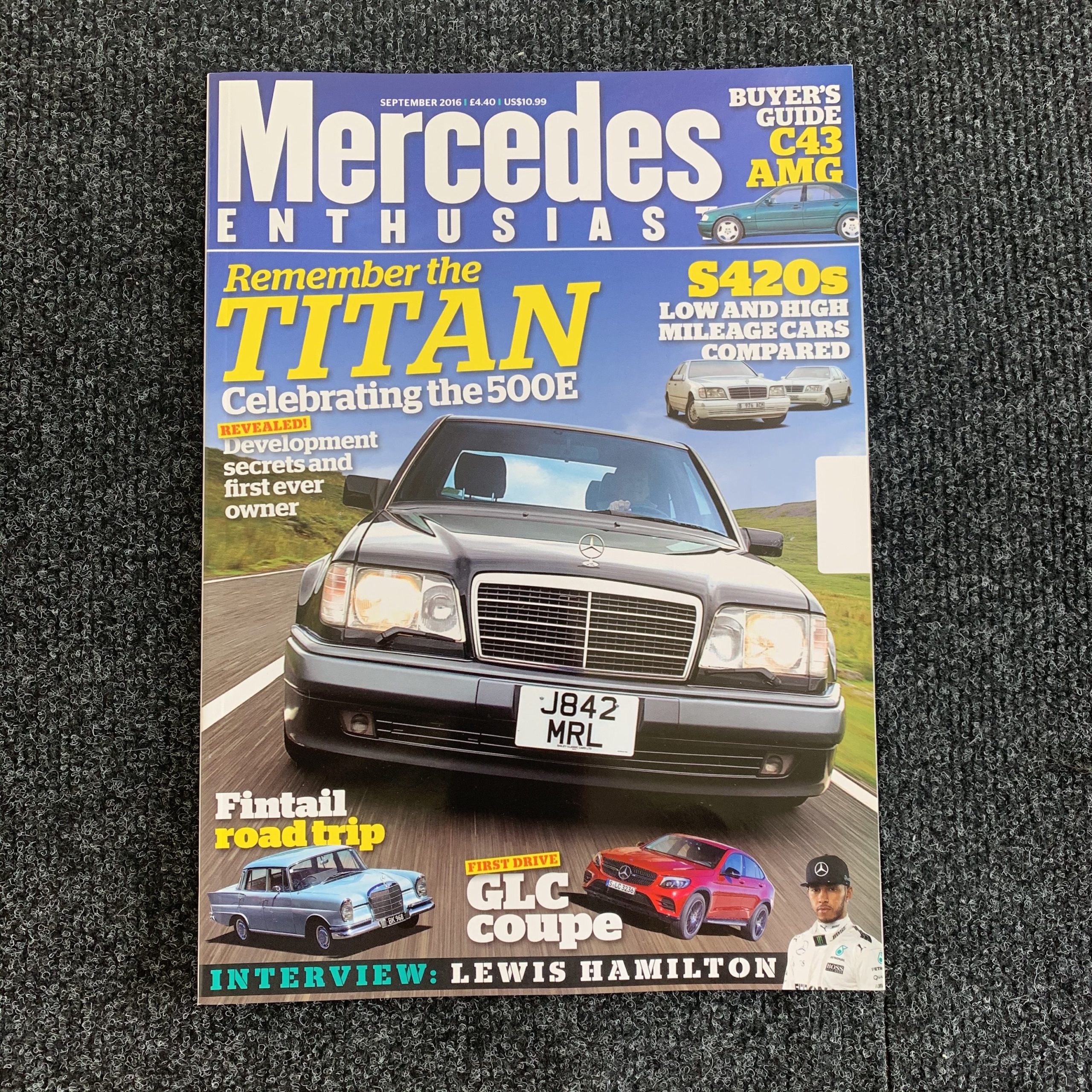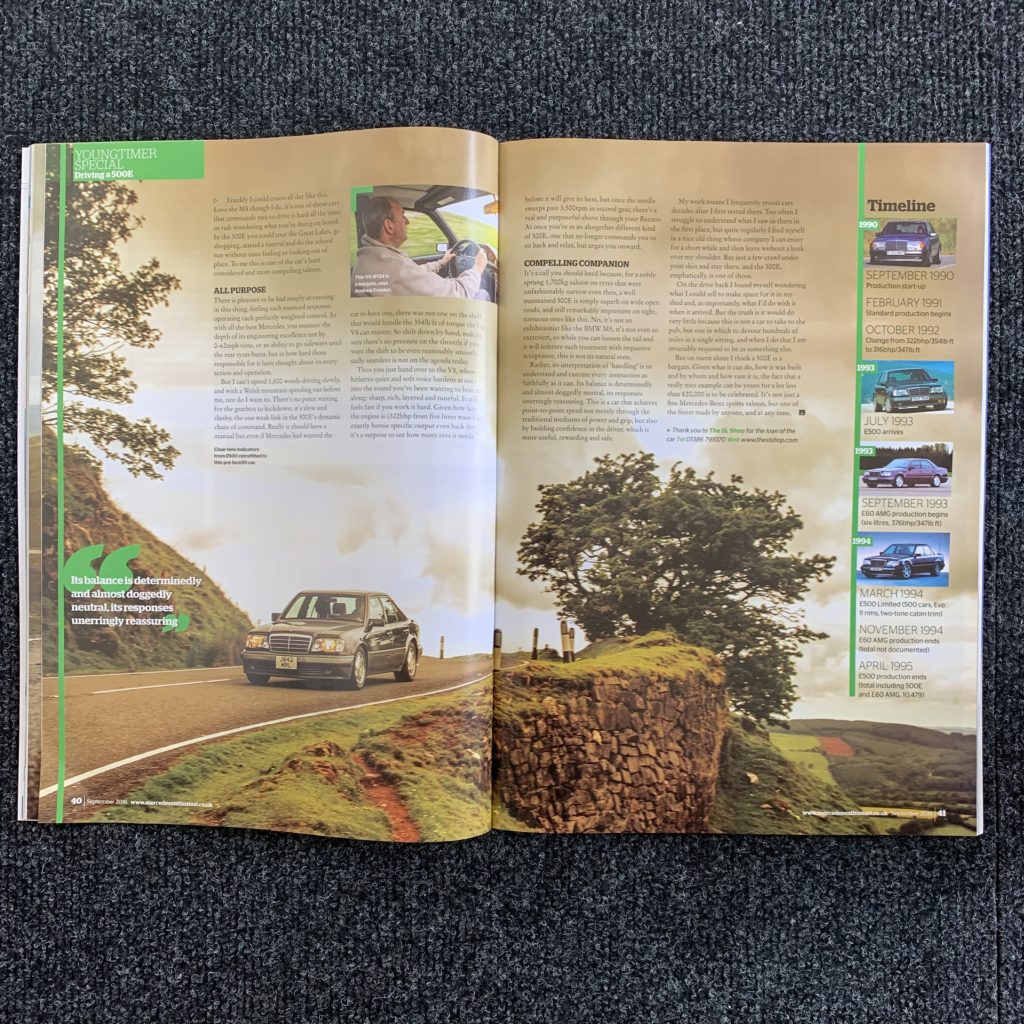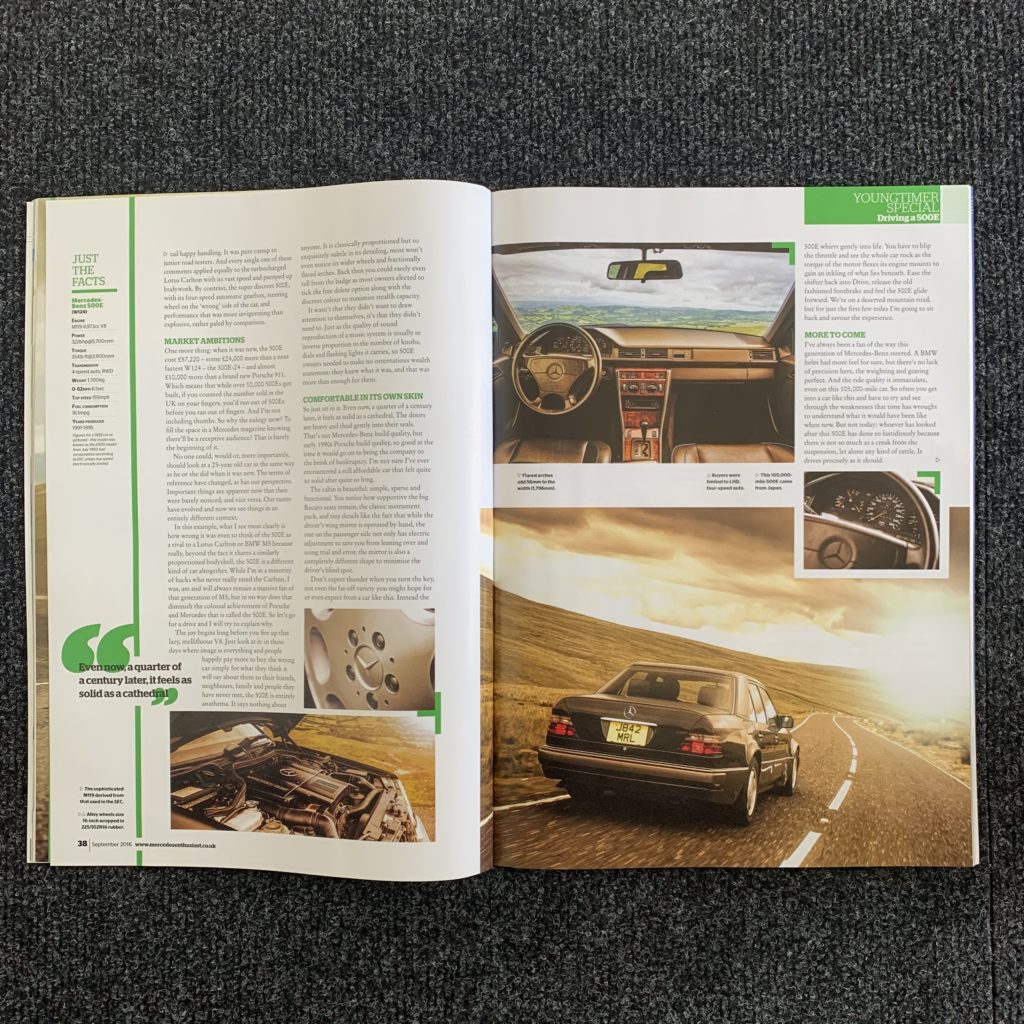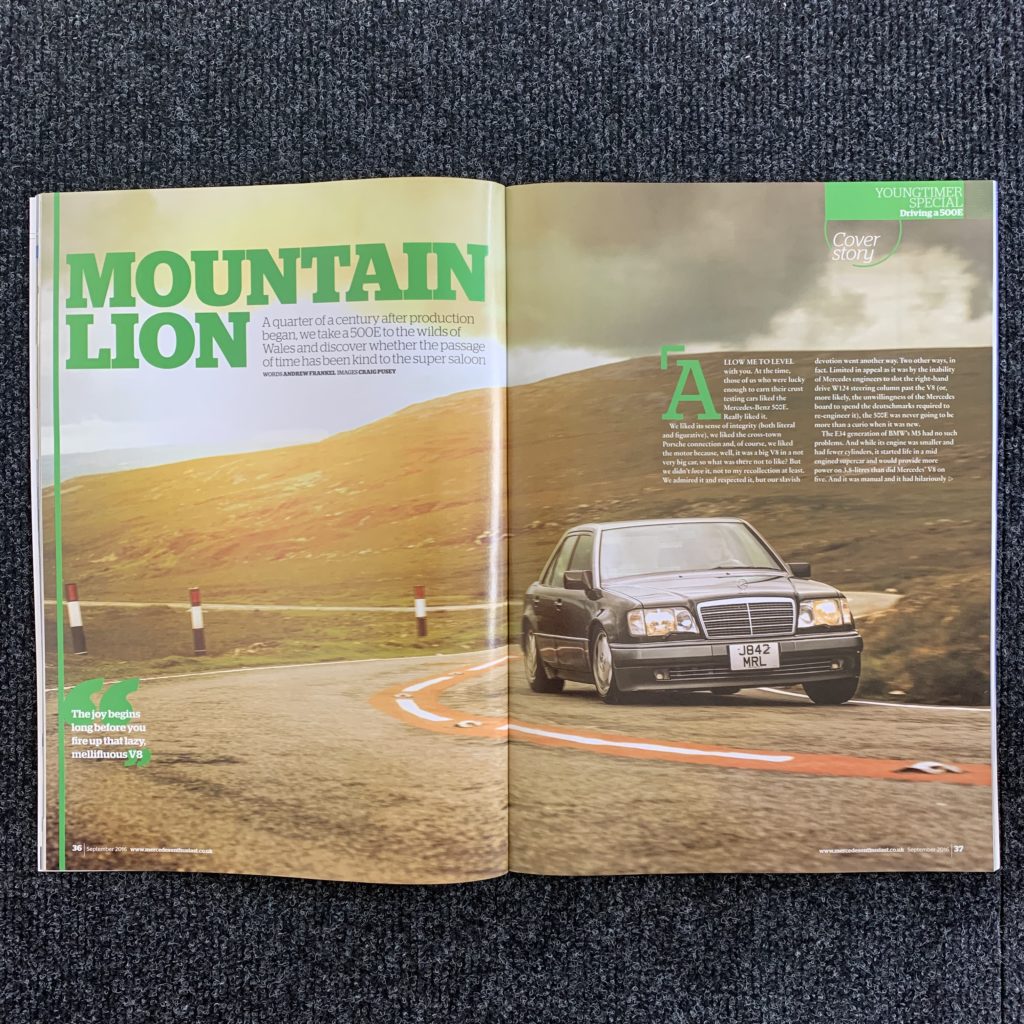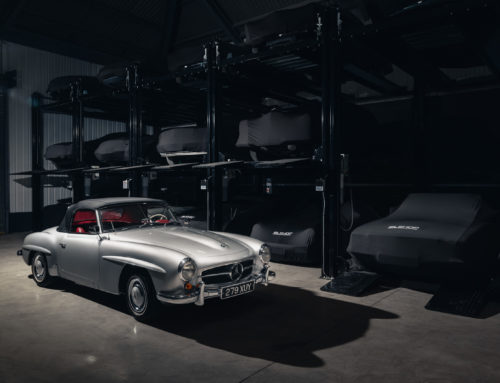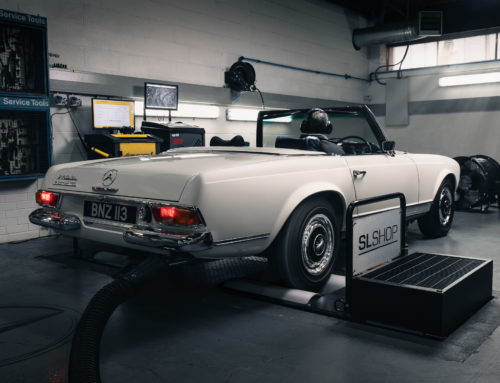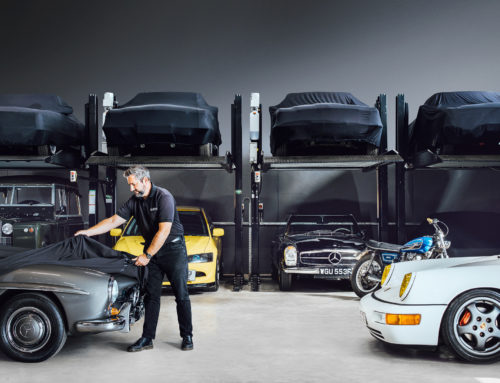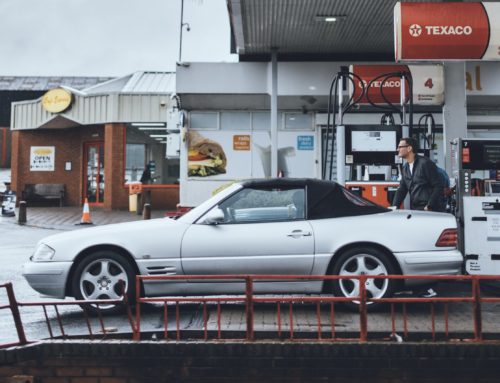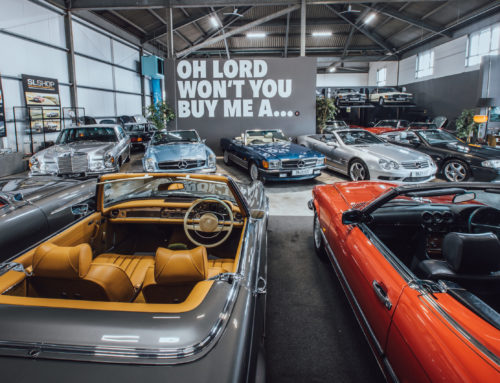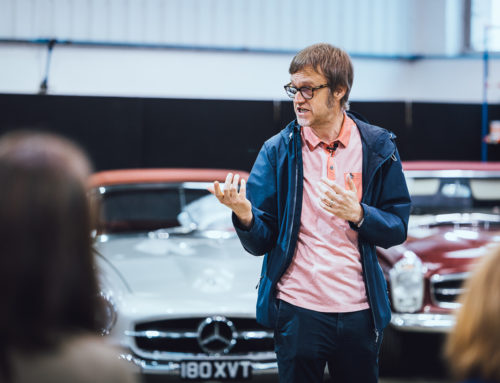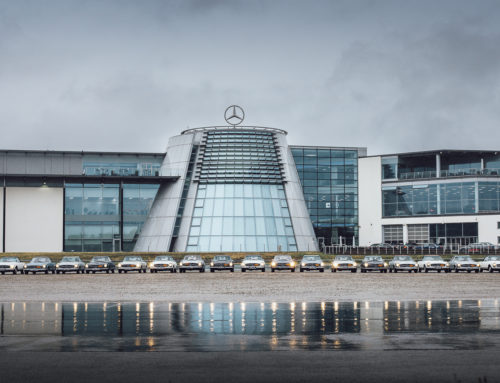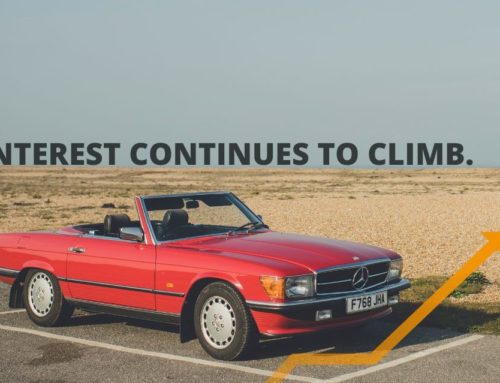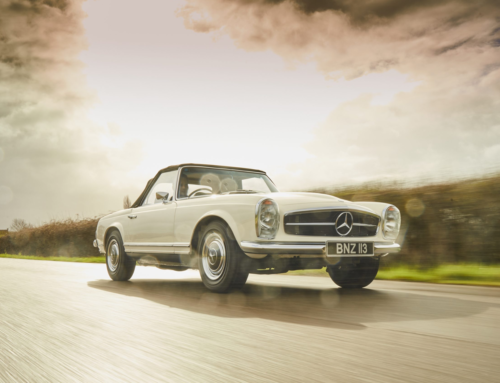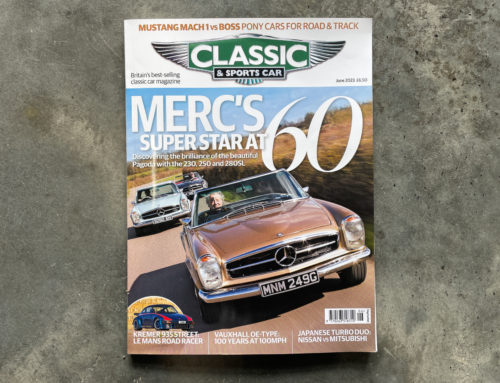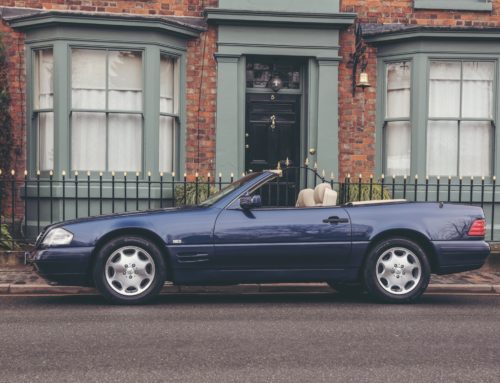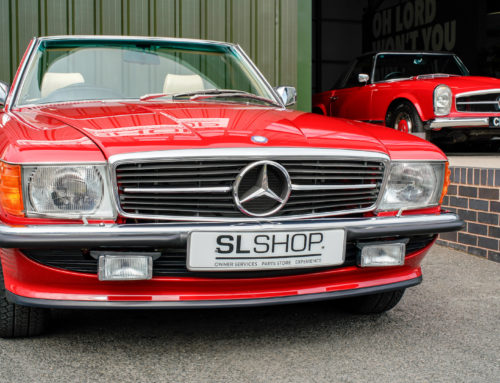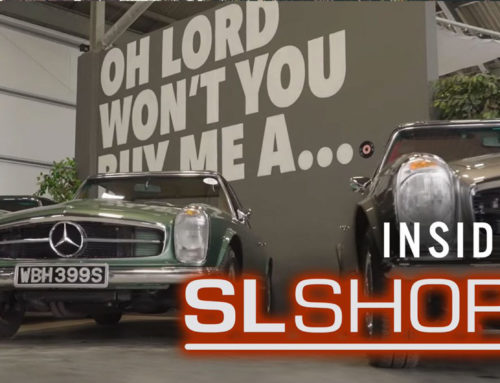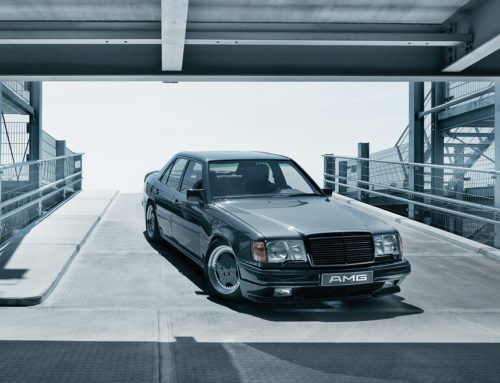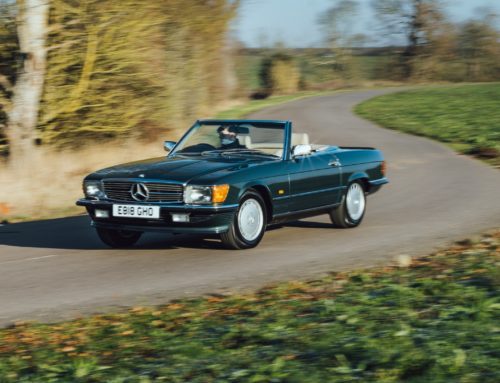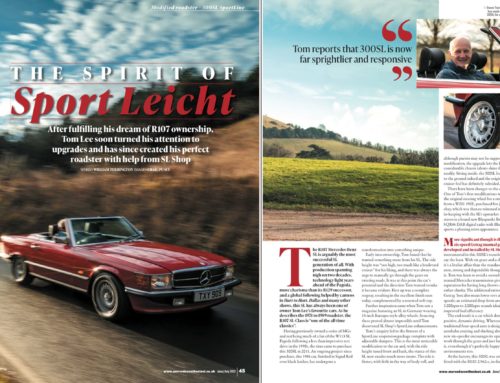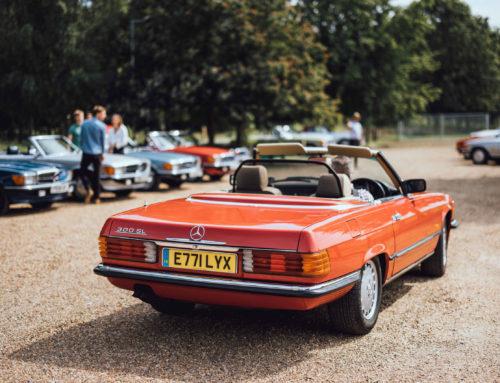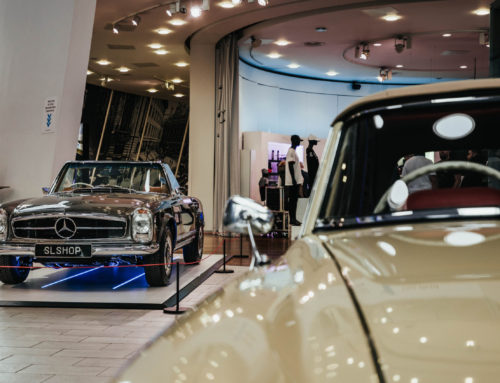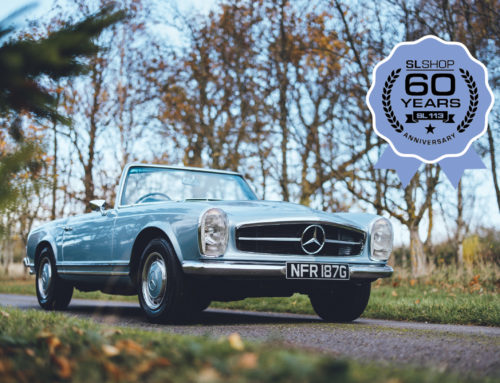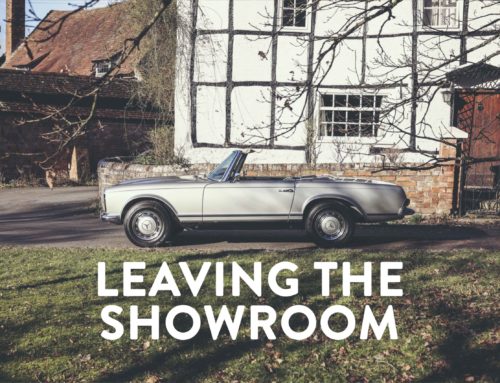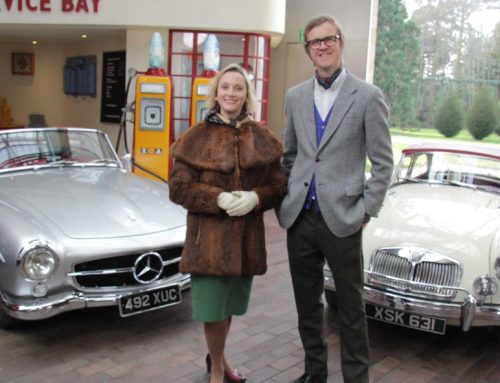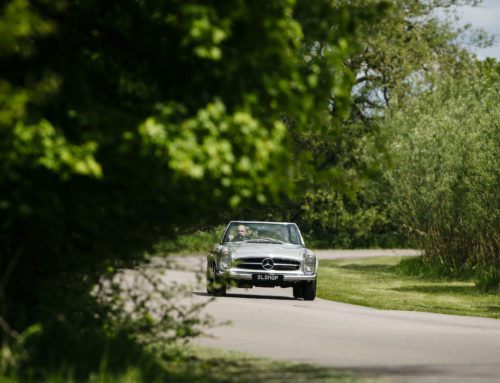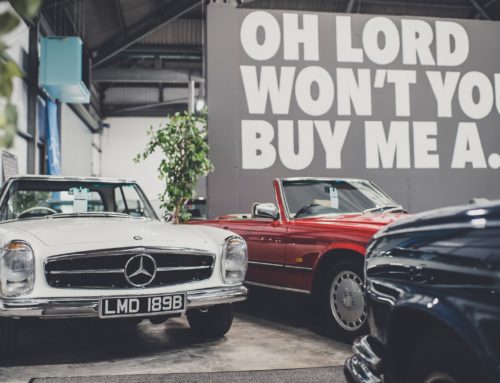A quarter of a century after production began, we take a 500E to the wilds of Wales and discover whether the passage of time has been kind to the super saloon.
Allow me to level with you. At the time, those of us who were lucky enough to earn their crust testing cars liked the Mercedes-Benz 500E. Really liked it.
We liked its sense of integrity (both literal and figurative), we liked the cross-town Porsche connection and, of course, we liked the motor because, well, it was a big V8 in a not very big car, so what was there not to like? But we didn’t love it, not to my recollection at least. We admired it and respected it, but our slavish devotion went another way. Two other ways, in fact. Limited in appeal as it was by the inability of Mercedes engineers to slot the right-hand drive W124 steering column past the V8 (or, more likely, the unwillingness of the Mercedes board to spend the deutschmarks required to re-engineer it), the 500E was never going to be more than a curio when it was new.
The E34 generation of BMWs M5 had no such problems. And while its engine was smaller and had fewer cylinders, it started life in a mid-engine supercar and would provide more power on 3.8 litres than did Mercedes’ V8 on five. And it was manual and it had hilariously tail happy handling. It was pure catnip to junior road testers. And every single one of these comments applied equally to the turbocharged Lotus Carlton with its vast speed and pumped up bodywork. By contrast, the super discreet 500E, with its four-speed automatic gearbox, steering wheel on the ‘wrong’ side of the car, and performance that was more invigorating than explosive, rather paled by comparison.
Market ambitions
One more thing; when it was new, the 500E cost £57,220 – some £24,000 more than a next fastest W124 – the 300E-24 – and almost £10,000 more than a brand-new Porsche 911. Which means that while over 10,000 500Es got built, if you counted the number sold in the UK on your fingers, you’d run out of 500Es before you ran out of fingers. And I’m not including thumbs. So why the eulogy now? To fill the space in a Mercedes magazine knowing there’ll be a receptive audience? That is barely the beginning of it.
No one could, would or, more importantly, should look at a 25-year-old car in the same way as he or she did when it was new. The terms of reference have changed, as has our perspective. Important things are apparent now that then were barely noticed, and vice versa. Our tastes have evolved and now we see things in an entirely different context.
In this example, what I see most clearly is how wrong it was to even to think of the 500E as a rival to a Lotus Carlton or BMW M5 because really, beyond the fact it shares a similarly proportioned bodyshell, the 500E is a different kind of car altogether. While I’m in a minority of hacks who never really rated the Carlton, I was, am and will always remain a massive fan of that generation of M5, but in no way does that diminish the colossal achievement of Porsche and Mercedes that is called the 500E. So, let’s go for a drive and I will try to explain why.
The joy begins long before you fire up that lazy, mellifluous V8. Just look at it: in these days where image is everything and people happily pay more to buy the wrong car simply for what they think it will say about them to their friends, neighbours, family and people they have never met, the 500E is entirely anathema. It says nothing about anyone. It is classically proportioned but so exquisitely subtle in its detailing, most won’t even notice its wider wheels and fractionally flared arches. Back then you could rarely even tell from the badge as most owners elected to tick the free delete option along with the discreet colour to maximise stealth capacity.
It wasn’t that they didn’t want to draw attention to themselves, it’s that they didn’t need to. Just as the quality of sound reproduction of a music system is usually in inverse proportion to the number of knobs, dials and flashing lights it carries, so 500E owners needed to make no ostentatious wealth statement; they knew what it was, and that was more than enough for them.
Comfortable in its own skin
So just sit in it. Even now, a quarter of a century later, it feels as solid as a cathedral. The doors are heavy and thud gently into their seals. That’s not Mercedes-Benz build quality, but early 1990s Porsche build quality, so good at the time it would go on to bring the company to the brink of bankruptcy. I’m not sure I’ve ever encountered a still affordable car that felt quite so solid after quite so long.
The cabin is beautiful; simple, sparse and functional. You notice how supportive the big Recaro seats remain, the classic instrument pack, and tiny details like the fact that while the driver’s wing mirror is operated by hand, the one on the passenger side not only has electric adjustment to save you from leaning over and using trial and error, the mirror is also a completely different shape to minimise the driver’s blind spot.
Don’t expect thunder when you turn the key, not even the far-off variety you might hope for or even expect from a car like this. Instead the 500E whirrs gently into life. You have to blip the throttle and see the whole car rock as the torque of the motor flexes its engine mounts to gain an inkling of what lies beneath. Ease the shifter back into Drive, release the old- fashioned footbrake and feel the 500E glide forward. We’re on a deserted mountain road, but for just a few miles I’m going to sit back and savour the experience.
More to come
I’ve always been a fan of the way this generation of Mercedes-Benz steered. A BMW helm had more feel for sure, but there’s no lack of precision here, the weighting and gearing perfect. And the ride quality is immaculate, even on this 105,000-mile car. So often you get into a car like this and have to try and see through the weaknesses that time has wrought to understand what it would have been like when new. But not today; whoever has looked after this 500E has done so fastidiously because there is not so much as a creak from the suspension, let alone any kind of rattle. It drives precisely as it should.
Frankly I could cruise all day like this. Love the M5 though I do, it’s one of those cars that commands you to drive it hard all the time, or risk wondering what you’re doing on board. In the 500E you could tour the Great Lakes, go shopping, attend a funeral and do the school run without once feeling or looking out of place. To me this is one of the car’s least considered and most compelling talents.
All purpose
There is pleasure to be had simply in existing in this thing, feeling each nuanced response, operating each perfectly weighted control. As with all the best Mercedes, you measure the depth of its engineering excellence not by 0.62mph time, or an ability to go sideways until the rear tyres burst, but in how hard those responsible for it have thought about its every action and operation.
But I can’t spend 1,800 words driving slowly, and with a Welsh mountain spooling out before me, nor do I want to. There’s no point waiting for the gearbox to kickdown; it’s slow and slushy, the one weak link in the 500Es dynamic chain of command. Really it should have a manual but even if Mercedes had wanted the car to have one, there was not one on the shelf that would handle the 354lb ft of torque the big V8 can muster. So, shift down by hand, making sure there’s no pressure on the throttle if you want the shift to be even reasonably smooth; sadly, seamless is not on the agenda today.
Then you just hand over to the V8, whose hitherto quiet and soft voice hardens at once into the sound you’ve been wanting to hear all along; sharp, rich, layered and tuneful. It still feels fast if you work it hard. Given how lazy the engine is (322bhp from five litres wasn’t exactly heroic specific output even back then) it’s a surprise to see how many revs it needs before it will give its best, but once the needle sweeps past 3,500rpm in second gear, there’s a real and purposeful shove through your Recaro. At once you’re in an altogether different kind of 500E, one that no longer commands you to sit back and relax, but urges you onward.
Compelling companion
It’s a call you should heed because, for a softly sprung 1,700kg saloon on tyres that were unfashionably narrow even then, a well maintained 500E is simply superb on wide open roads, and still remarkably impressive on tight, tortuous ones like this. No, it’s not an exhibitionist like the BMW M5, it’s not even an extrovert, so while you can loosen the tail and it will tolerate such treatment with impassive acceptance, this is not its natural state.
Rather, its interpretation of ‘handling’ is to understand and execute every instruction as faithfully as it can. Its balance is determinedly and almost doggedly neutral, its responses unerringly reassuring. This is a car that achieves point-to-point speed not merely through the traditional mediums of power and grip, but also by building confidence in the driver, which is more useful, rewarding and safe.
My work means I frequently revisit cars decades after I first tested them. Too often I struggle to understand what I saw in them in the first place, but quite regularly I find myself in a nice old thing whose company I can enjoy for a short while and then leave without a look over my shoulder. But just a few crawl under your skin and stay there, and the 500E, emphatically, is one of those.
On the drive back, I found myself wondering what I could sell to make space for it in in my shed and, as importantly, what I’d do with it when it arrived. But the truth is it would do very little because this is not a car to take to the pub, but one in which to devour hundreds of miles in a single sitting, and when I do that I am invariably required to be in something else.
But on merit alone I think a 500E is a bargain. Given what it can do, how it was built and by whom and how rare it is, the fact that a really nice example can be yours for a lot less than £20,000 is to be celebrated. It’s not just a fine Mercedes-Benz sports saloon, but one of the finest made by anyone, and at any time.
A quarter of a century after production began, we take a 500E to the wilds of Wales and discover whether the passage of time has been kind to the super saloon.
Allow me to level with you. At the time, those of us who were lucky enough to earn their crust testing cars liked the Mercedes-Benz 500E. Really liked it.
We liked its sense of integrity (both literal and figurative), we liked the cross-town Porsche connection and, of course, we liked the motor because, well, it was a big V8 in a not very big car, so what was there not to like? But we didn’t love it, not to my recollection at least. We admired it and respected it, but our slavish devotion went another way. Two other ways, in fact. Limited in appeal as it was by the inability of Mercedes engineers to slot the right-hand drive W124 steering column past the V8 (or, more likely, the unwillingness of the Mercedes board to spend the deutschmarks required to re-engineer it), the 500E was never going to be more than a curio when it was new.
The E34 generation of BMWs M5 had no such problems. And while its engine was smaller and had fewer cylinders, it started life in a mid-engine supercar and would provide more power on 3.8 litres than did Mercedes’ V8 on five. And it was manual and it had hilariously tail happy handling. It was pure catnip to junior road testers. And every single one of these comments applied equally to the turbocharged Lotus Carlton with its vast speed and pumped up bodywork. By contrast, the super discreet 500E, with its four-speed automatic gearbox, steering wheel on the ‘wrong’ side of the car, and performance that was more invigorating than explosive, rather paled by comparison.
Market ambitions
One more thing; when it was new, the 500E cost £57,220 – some £24,000 more than a next fastest W124 – the 300E-24 – and almost £10,000 more than a brand-new Porsche 911. Which means that while over 10,000 500Es got built, if you counted the number sold in the UK on your fingers, you’d run out of 500Es before you ran out of fingers. And I’m not including thumbs. So why the eulogy now? To fill the space in a Mercedes magazine knowing there’ll be a receptive audience? That is barely the beginning of it.
No one could, would or, more importantly, should look at a 25-year-old car in the same way as he or she did when it was new. The terms of reference have changed, as has our perspective. Important things are apparent now that then were barely noticed, and vice versa. Our tastes have evolved and now we see things in an entirely different context.
In this example, what I see most clearly is how wrong it was to even to think of the 500E as a rival to a Lotus Carlton or BMW M5 because really, beyond the fact it shares a similarly proportioned bodyshell, the 500E is a different kind of car altogether. While I’m in a minority of hacks who never really rated the Carlton, I was, am and will always remain a massive fan of that generation of M5, but in no way does that diminish the colossal achievement of Porsche and Mercedes that is called the 500E. So, let’s go for a drive and I will try to explain why.
The joy begins long before you fire up that lazy, mellifluous V8. Just look at it: in these days where image is everything and people happily pay more to buy the wrong car simply for what they think it will say about them to their friends, neighbours, family and people they have never met, the 500E is entirely anathema. It says nothing about anyone. It is classically proportioned but so exquisitely subtle in its detailing, most won’t even notice its wider wheels and fractionally flared arches. Back then you could rarely even tell from the badge as most owners elected to tick the free delete option along with the discreet colour to maximise stealth capacity.
It wasn’t that they didn’t want to draw attention to themselves, it’s that they didn’t need to. Just as the quality of sound reproduction of a music system is usually in inverse proportion to the number of knobs, dials and flashing lights it carries, so 500E owners needed to make no ostentatious wealth statement; they knew what it was, and that was more than enough for them.
Comfortable in its own skin
So just sit in it. Even now, a quarter of a century later, it feels as solid as a cathedral. The doors are heavy and thud gently into their seals. That’s not Mercedes-Benz build quality, but early 1990s Porsche build quality, so good at the time it would go on to bring the company to the brink of bankruptcy. I’m not sure I’ve ever encountered a still affordable car that felt quite so solid after quite so long.
The cabin is beautiful; simple, sparse and functional. You notice how supportive the big Recaro seats remain, the classic instrument pack, and tiny details like the fact that while the driver’s wing mirror is operated by hand, the one on the passenger side not only has electric adjustment to save you from leaning over and using trial and error, the mirror is also a completely different shape to minimise the driver’s blind spot.
Don’t expect thunder when you turn the key, not even the far-off variety you might hope for or even expect from a car like this. Instead the 500E whirrs gently into life. You have to blip the throttle and see the whole car rock as the torque of the motor flexes its engine mounts to gain an inkling of what lies beneath. Ease the shifter back into Drive, release the old- fashioned footbrake and feel the 500E glide forward. We’re on a deserted mountain road, but for just a few miles I’m going to sit back and savour the experience.
More to come
I’ve always been a fan of the way this generation of Mercedes-Benz steered. A BMW helm had more feel for sure, but there’s no lack of precision here, the weighting and gearing perfect. And the ride quality is immaculate, even on this 105,000-mile car. So often you get into a car like this and have to try and see through the weaknesses that time has wrought to understand what it would have been like when new. But not today; whoever has looked after this 500E has done so fastidiously because there is not so much as a creak from the suspension, let alone any kind of rattle. It drives precisely as it should.
Frankly I could cruise all day like this. Love the M5 though I do, it’s one of those cars that commands you to drive it hard all the time, or risk wondering what you’re doing on board. In the 500E you could tour the Great Lakes, go shopping, attend a funeral and do the school run without once feeling or looking out of place. To me this is one of the car’s least considered and most compelling talents.
All purpose
There is pleasure to be had simply in existing in this thing, feeling each nuanced response, operating each perfectly weighted control. As with all the best Mercedes, you measure the depth of its engineering excellence not by 0.62mph time, or an ability to go sideways until the rear tyres burst, but in how hard those responsible for it have thought about its every action and operation.
But I can’t spend 1,800 words driving slowly, and with a Welsh mountain spooling out before me, nor do I want to. There’s no point waiting for the gearbox to kickdown; it’s slow and slushy, the one weak link in the 500Es dynamic chain of command. Really it should have a manual but even if Mercedes had wanted the car to have one, there was not one on the shelf that would handle the 354lb ft of torque the big V8 can muster. So, shift down by hand, making sure there’s no pressure on the throttle if you want the shift to be even reasonably smooth; sadly, seamless is not on the agenda today.
Then you just hand over to the V8, whose hitherto quiet and soft voice hardens at once into the sound you’ve been wanting to hear all along; sharp, rich, layered and tuneful. It still feels fast if you work it hard. Given how lazy the engine is (322bhp from five litres wasn’t exactly heroic specific output even back then) it’s a surprise to see how many revs it needs before it will give its best, but once the needle sweeps past 3,500rpm in second gear, there’s a real and purposeful shove through your Recaro. At once you’re in an altogether different kind of 500E, one that no longer commands you to sit back and relax, but urges you onward.
Compelling companion
It’s a call you should heed because, for a softly sprung 1,700kg saloon on tyres that were unfashionably narrow even then, a well maintained 500E is simply superb on wide open roads, and still remarkably impressive on tight, tortuous ones like this. No, it’s not an exhibitionist like the BMW M5, it’s not even an extrovert, so while you can loosen the tail and it will tolerate such treatment with impassive acceptance, this is not its natural state.
Rather, its interpretation of ‘handling’ is to understand and execute every instruction as faithfully as it can. Its balance is determinedly and almost doggedly neutral, its responses unerringly reassuring. This is a car that achieves point-to-point speed not merely through the traditional mediums of power and grip, but also by building confidence in the driver, which is more useful, rewarding and safe.
My work means I frequently revisit cars decades after I first tested them. Too often I struggle to understand what I saw in them in the first place, but quite regularly I find myself in a nice old thing whose company I can enjoy for a short while and then leave without a look over my shoulder. But just a few crawl under your skin and stay there, and the 500E, emphatically, is one of those.
On the drive back, I found myself wondering what I could sell to make space for it in in my shed and, as importantly, what I’d do with it when it arrived. But the truth is it would do very little because this is not a car to take to the pub, but one in which to devour hundreds of miles in a single sitting, and when I do that I am invariably required to be in something else.
But on merit alone I think a 500E is a bargain. Given what it can do, how it was built and by whom and how rare it is, the fact that a really nice example can be yours for a lot less than £20,000 is to be celebrated. It’s not just a fine Mercedes-Benz sports saloon, but one of the finest made by anyone, and at any time.
More from Journal
CARE
THE ULTIMATE CERTIFIED SERVICING INVESTMENT PLAN
Your ownership journey matters to us, which is why we have created a simple certified servicing investment plan, tailored to your individual needs and aspirations.
Start investing today and our dedicated CARE team will work with you to increase the value and enjoyment you receive from your vehicle.

STAY IN TUNE WITH SLSHOP MOMENTS
As part of SLSHOP’s community of enthusiasts, you’ll be the first to hear about events and tours, key product offers, exciting stories from owners around the world and of course… our latest additions to the showroom. So, be the first to know and you might just sneak a car on your driveway or take your car’s condition to new heights with our exclusive replacement parts.
Or, visit SLSHOP Journal
